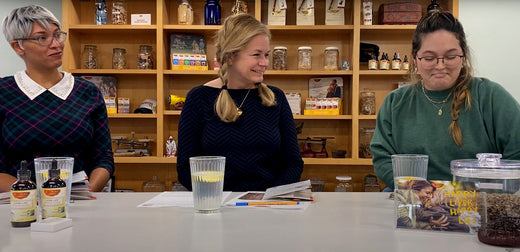45 Day Total Body Detox 2024
By Stephanie Ray, ND, BCN
The gallbladder is a digestive organ system that stores bile produced by the liver.
When the body senses the presence of fat in the digestive tract, a hormone is released from the small intestine and signals the gallbladder to discharge bile into the duodenum in order to assist with fat digestion.
Physically, the gallbladder is interiorly-exteriorly paired with the liver. The liver, known as “the general,” creates thoughts and ideas; it plans and strategizes. The gallbladder, “the general’s advisor,” implements the liver’s plans and oversees the execution. If the gallbladder is in disharmony it affects the liver and vice versa.
The bile that the liver produces is a powerful antioxidant that helps to detoxify the liver. The liver then releases the bile, which goes to the gallbladder for storage to be used later in the digestion process. The gallbladder is the link between the liver and digestion. When liver function flows smoothly and easily, bile is produced and excreted regularly, ensuring optimal digestion.
When the liver stagnates, bile production is impaired, resulting in:
- Acid reflux
- Abdominal distention and bloating
- Belching
- Bad breath
- Flatulence
- Indigestion
- Constipation
Many people who have their gallbladder removed don’t notice any changes in their digestion. However, to keep the body processing food and other substances as if it still has a gallbladder will be insurance for longevity and is the optimal approach.
Herbs in Liver Life® that support the gallbladder & liver
- Olive Leaf - prevents pathogens from reproducing and creating more microbes within the body and has antioxidant and antimicrobial properties. Olive leaf increases the flow of bile and tonifies the liver.
- Reishi Mushroom (Ganoderma Lucidum) - triterpenoids are responsible for the bitter taste as well as the liver protecting, lipid lowering, antioxidant and anti-inflammatory properties. They also inhibit the release of histamine, which may explain Ganoderma’s anti-allergic activity.
- Grifola Mushroom (Maitake) - has the ability to alter lipid metabolism by inhibiting both the accumulation of liver lipids and the elevation of serum lipids, reflected in its modulation of key enzymes involved in cholesterol and triacylglycerol biosynthesis, absorption, and catabolic pathways.
- Coriolus Versicolor (Turkey Tail) - one of the best-researched herbal medicines, with over 400 trials demonstrating its effectiveness, stimulates NK cell activity. Coriolus contains a unique protein, called TVC, that both stimulates the immune system and modulates its response.
Healthy Behaviors for Your Liver & Gallbladder:
- Discontinue eating 2-3 hours before sleep. Late night eating creates stagnation in the liver and prevents the body from cleaning and repairing at night.
- Stop eating when 80% full. Overeating creates more pressure on the liver and gallbladder. Eat to the point when you feel satisfied and can eat a little more but don’t.
Foods That Support the Liver & Gallbladder
- Whole grains like brown rice, barley, millet, quinoa, spelt, kamut, oats and wheat berries are all helpful. If you have gluten sensitivity, avoid grains like barley, kamut and spelt.
- Emphasize eating plenty of leafy vegetables including kale, collards, bok choy, nappa cabbage, watercress, mustard greens, leek, daikon tops, carrot tops, radish greens, turnip tops, dandelion greens, lettuces, and others.
- Sprouts and mushrooms are deeply helpful as they the highest concentrations of trace minerals, vitamins, and macrophage support.
- Foods that contain lipase: avocados, walnuts, pinenuts, coconuts, mung bean, lupini beans, lentils, chickpeas, oats, and eggplant.
- Incorporate sour tasting foods & herbs 3-4 times a week as sour flavor helps release stagnation in the liver and gallbladder. Recommendations: Sauerkraut, Granny Smith apples, lemons, brown rice umeboshi vinegar, sour plums and cherries. A little lemon squeezed on greens does wonders.
Cilantro-Leek Mung Bean Soup (Vegan, Gluten-Free)
Prep Time: 10 minutes
Cook Time: 1 hour
Makes about 8 servings
Ingredients:
- 1-1/2 tbsp extra–virgin olive oil
- 2 cups chopped onions
- 1- cup chopped celery
- 1- cup chopped carrots
- ½ - cup chopped leeks
- 1- cup chopped maitake mushrooms
- 4 cloves garlic, chopped
- 2- tbsp minced fresh cilantro
- 6 cups water
- 1-1/2 tsp fine sea salt
- 1¼ cups dried mung beans or lentils, rinsed, drained
- 1 28–ounce can diced tomatoes in juice, undrained
Instructions
- In a large saucepan over medium high heat, heat the oil. Add the onions, celery, carrots, leeks, maitake mushrooms, and garlic; cook and stir until vegetables begin to brown, about 15 minutes.
- Add water, salt, and beans; bring to boil. Reduce heat to low, cover, and simmer until beans are very tender, about 50 minutes. Add the tomatoes, the juices, and cilantro; simmer 5 minutes longer.
- Transfer 3 cups soup (mostly solids) to blender and puree until smooth. Return puree to soup in pan; thin soup with more water by ¼ cupfuls, if too thick. Season with salt, pepper. Ladle soup into bowls.

